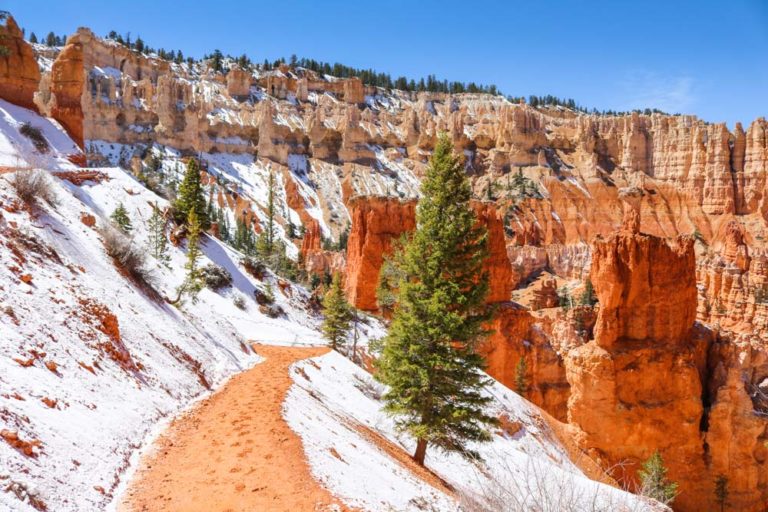Explore Craters of the Moon National Monument on These 5 Trails
One of America’s most extraordinary natural environments, Craters of the Moon National Monument protects a vast area of lava flows and caves, cinder and spatter cones, and sagebrush plains. You can explore this otherworldly landscape on a handful of wonderful Craters of the Moon hikes.
A barren expanse of volcanic rocks and lava flows, Craters of the Moon was described best by geologist Harold T. Stearns in 1923:
“The surface of the moon as seen through a telescope, the dark craters and the cold lava nearly destitute of vegetation.”
Harold T. Stearns, Geologist
The strangeness of the landscape inspired local legends, attracted explorers and, eventually, resulted in a National Geographic magazine feature. When President Coolidge created Craters of the Moon National Monument in 1924, he called it a “weird and scenic landscape, peculiar to itself.”
Located in the Snake River Plain of central Idaho, Craters of the Moon National Monument is pretty remote. Very rarely is this a destination in itself, but rather a place people stop at on longer road trips.
The monument is, for example, the perfect place to spend the night on national park road trips between the Pacific Northwest (Mount Rainier, Olympic,…) and the Rocky Mountains (Yellowstone, Grand Teton,…).
Whatever brings you to Craters of the Moon, though, make sure to experience it up-close on the following Craters of the Moon hikes.
5 Beautiful Short Hikes in Craters of the Moon National Monument
While this national monument in central Idaho’s Snake River Plain also offers fantastic wilderness backpacking opportunities, most visitors will stay near the 7-mile Craters Loop Road.
Along this scenic circuit, several hiking trails in Craters of the Moon National Monument run to, past, below and even to the top of its many striking volcanic features.
Devils Orchard Nature Trail
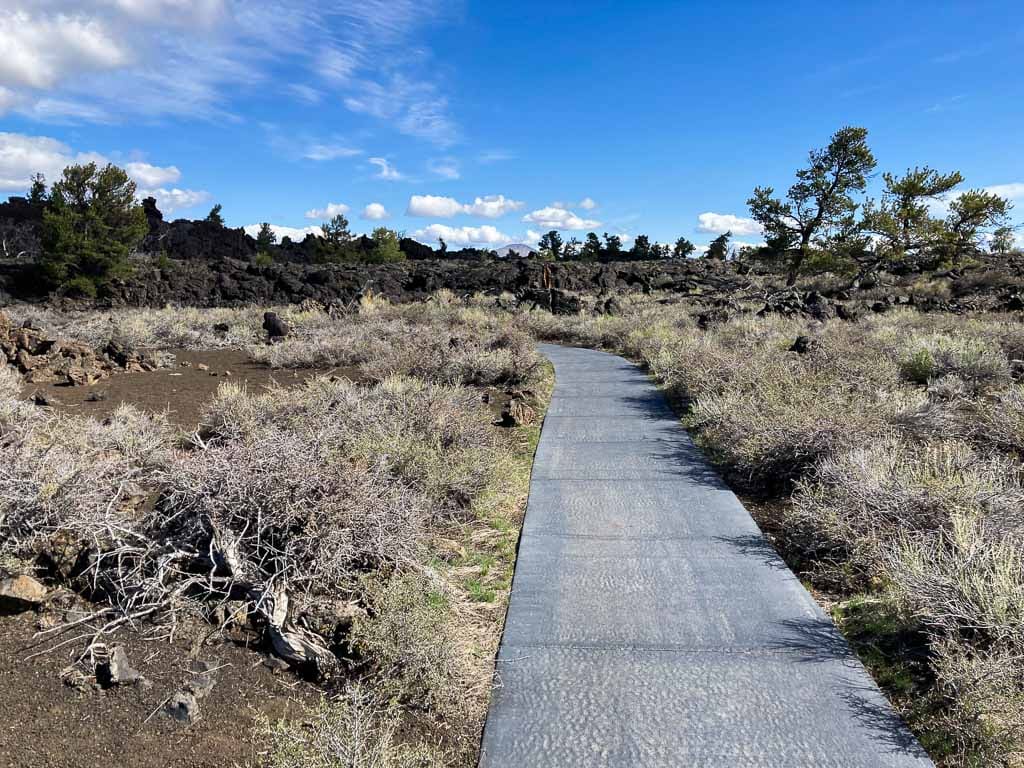
One of a couple of wheelchair-accessible trails in Craters of the Moon National Monument, Devils Orchard loops through an area of cinder beds dotted with lava fragments of the North Crater wall.
This short 0.5-mile walk allows you to explore and see these strange features in detail, and learn about how humans have impacted the park in the past and how it is protected today.
- Difficulty: Easy (wheelchair accessible)
- Distance: 0.5 miles (loop)
Spatter Cones Trail
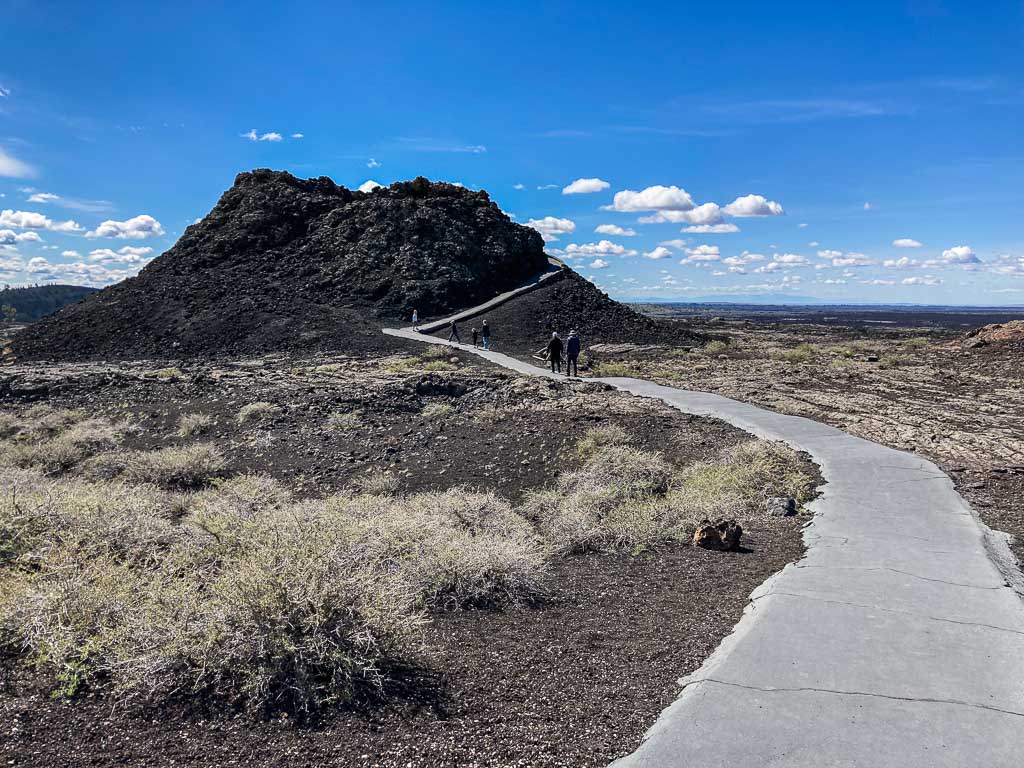
The iconic Spatter Cones Trail is also accessible to wheelchairs, although its last section is rather steep. Only 0.1 miles there and back, this is by far the park’s shortest trail.
It is a must-do hike at Craters of the Moon, a place that represents the very essence of the park. Walk to the top of the Spatter Cones, which are basically miniature volcanoes. For a longer hike, you can also hike about 0.25 steep miles to the beautiful Big Craters.
- Difficulty: Easy
- Distance: 0.1 miles (roundtrip)
Inferno Cone Climb
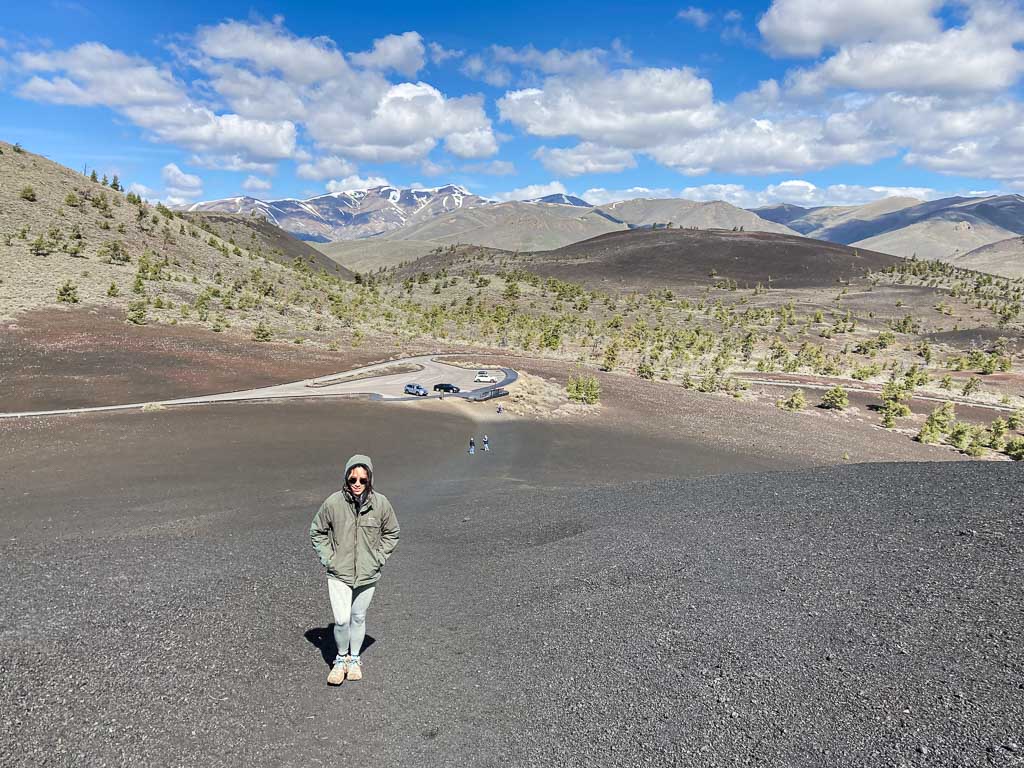
Probably my personal favorite Craters of the Moon hike, Inferno Cone offers amazing 360-degree panoramic views of the entire national monument.
The panorama takes in the Snake River Plain, the Great Rift and the Pioneer Mountains. On a clear day, you even be able to see the Teton Range, which is about 100 miles to the east.
Additionally, there’s also a clear view of Big Cinder Butte to the south, which towers above the vast lava plain and is one of the largest basaltic cinder cones on Earth.
It’s only 0.2 miles from the parking lot to the top of this striking cones, but it’s very steep and exposed. Be careful during strong winds.
- Difficulty: Moderate to strenuous
- Distance: 0.4 miles (roundtrip)
Broken Top Loop
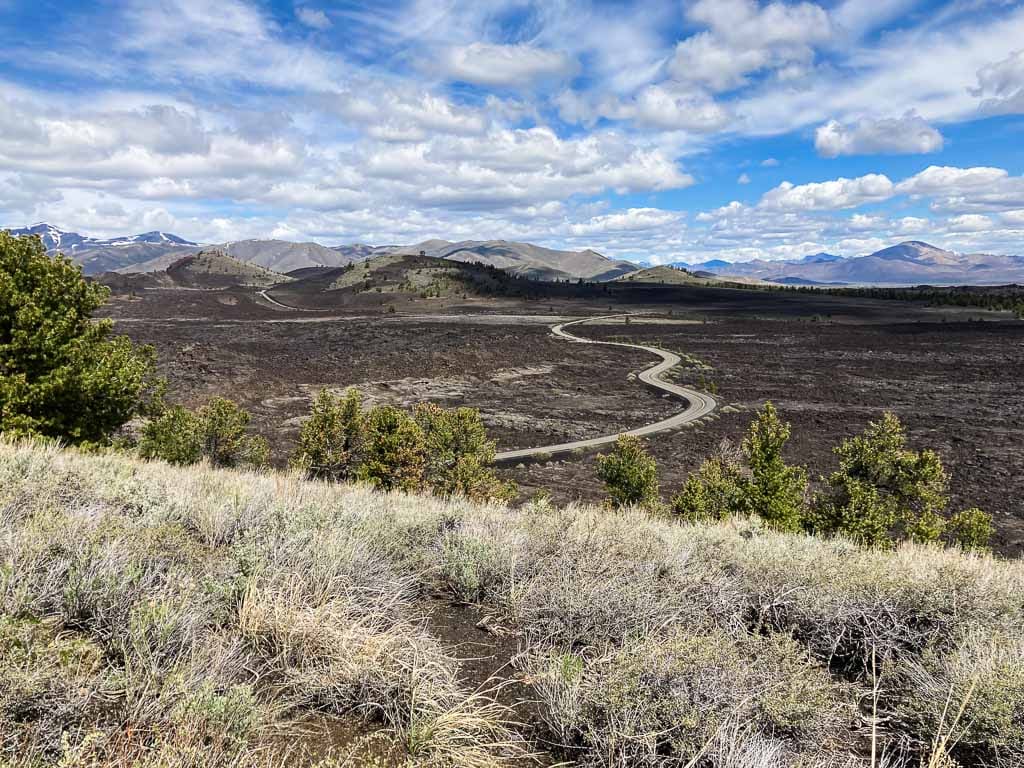
The longest trail in this overview of short Craters of the Moon hikes, the Broken Top Loop takes you on a 1.8-mile exploration around a cinder cone.
On this superb hike, you can see almost every kind of volcanic feature in Craters of the Moon National Monument. A short spur trail leads to the Big Sink Overlook, which offers spectacular views of the Big Sink and Lava Cascades, as well as the Craters Loop Road and the mountains beyond.
- Difficulty: Moderate
- Distance: 1.8 miles (loop)
Caves Trail
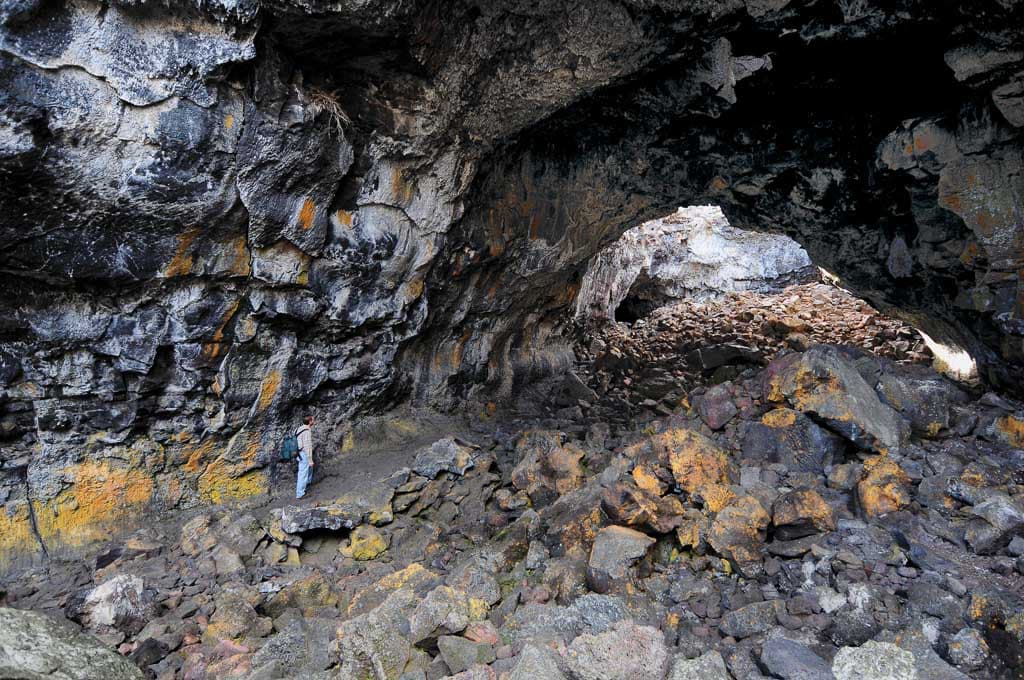
One of the most remarkable characteristics of Craters of the Moon National Monument are its lava caves, which are technically lava tubes, formed by hot rivers of molten rocks that flow below the surface.
Four lava caves are open to the public in the Cave Area—Dewdrop, Boy Scout, Beauty and Indian Tunnel—and accessible via a 0.8-mile trail across the lava flow. The monument’s many other caves are closed to protect sensitive populations of bats and other wildlife that find refuge in them.
To hike in the caves of Craters of the Moon, you need a free permit, which are available at the visitor center. Also note that these wild caves can be dangerous. Read the signs, follow guidelines, wear sturdy footwear and bring a flashlight.
- Difficulty: Easy to moderate
- Distance: 1.6 miles (roundtrip)
Craters of the Moon Lava Flow Campground
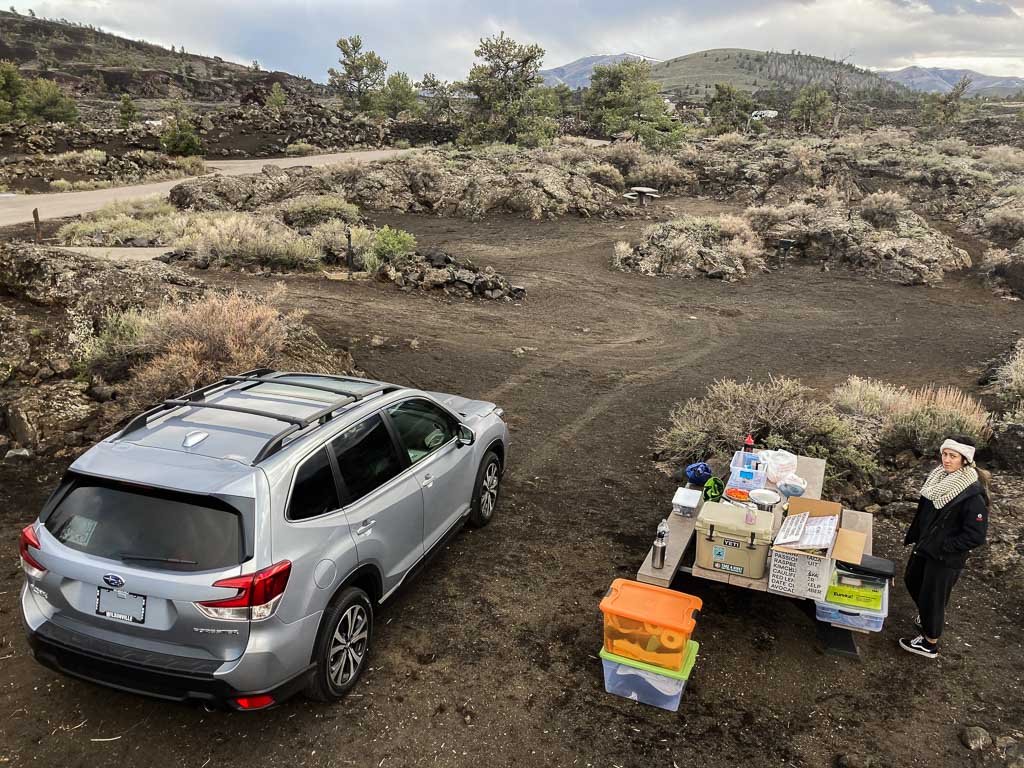
There are very few, if any, accommodation options near Craters of the Moon National Monument. The most convenient place to stay, by far, is the park’s Lava Flow Campground.
Situated near the visitor center, the start of the Craters Loop Road and a couple of Craters of the Moon hiking trails, the campground is the perfect base to explore this fascinating area.
It is open when the Loop Road is open, usually from April or May to late-November. All 42 sites are available on a first-come, first-served basis. You can find more information about the Lava Flow Campground here on the park’s website.



